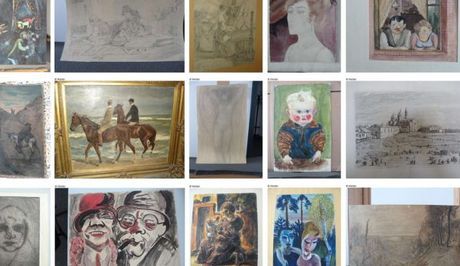German Ready to Return Nazi-Looted Art to Jewish Owners

An elderly German recluse is prepared to return precious paintings stolen by the Nazis from Jewish families including a priceless Matisse, his spokesman said.
Cornelius Gurlitt, 81, had stashed around 1,400 long-lost works by European masters in his Munich apartment and more than 200 paintings, sketches and sculptures in a home in Salzburg, Austria.
His spokesman said that Gurlitt had ordered his legal team to hand back works believed to have been stolen or extorted from Jewish families as part of the systematic plunder of art collections by Nazis during World War II.
"Should there be the well-founded suspicion that works are looted art then please give them back to their Jewish owners," Gurlitt told his lawyer, according to a statement by his spokesman Stephan Holzinger, confirming media reports.
Henri Matisse's "Sitting Woman" will be the first work returned, Holzinger said, to the heirs of prominent Paris art collector Paul Rosenberg.
The painting shows a stout, dark-haired woman in a floral dress sitting in a chair in a room with vibrant wall coverings.
The Nazis stole the work from Rosenberg and it was kept for a time in the vast looted art trove of Hermann Goering, the Gestapo secret police founder and air force chief.
"We are very confident about reaching a deal on the return in the coming days," Holzinger told Agence France Presse.
Gurlitt's father Hildebrand acquired the paintings in the 1930s and 1940s, when he worked as an art dealer tasked by the Nazis with selling stolen works and art the Hitler regime deemed "degenerate".
A task force appointed to research the origins of the Gurlitt works says it suspects that 458 were stolen or extorted from Jewish owners under Hitler.
It says 380 other pieces are believed to have been confiscated as part of a campaign against what the Nazis considered "degenerate" art, mainly from public collections and museums.
- A much larger hoard -
Germany came under fire for long keeping the Gurlitt find under wraps and faces renewed pressure over its post-World War II restitution efforts.
Lawmakers are currently debating a law to ditch a 30-year statute of limitations that has provided cover for people in possession of contested artwork.
Meanwhile Gurlitt's representatives acknowledged that the stash at his home in Salzburg was much larger and more valuable than first thought.
Originally said to include 60 works following their discovery in February, the collection at the ramshackle Austrian house in fact comprises a total of 238 pieces including 39 oil paintings and watercolours by Monet, Corot, Renoir, Manet, Courbet, Pissaro, Gauguin, Toulouse-Lautrec, Liebermann, Cezanne and Nolde, Holzinger said.
Among the best-known are Monet's "Waterloo Bridge" and Renoir's "Man with a Pipe".
Holzinger said the additional works had been unearthed during two subsequent trips to the house, in rooms that had previously been inaccessible due to an accumulation of clutter.
Gurlitt plans to seek the opinion of international experts to determine the provenance of the works in the Salzburg collection "so those staking claims can contact us directly", his lawyer, Christoph Edel said in the statement.
Unlike the original find, which was seized by German authorities, the works in Austria have been placed in safe-keeping by Gurlitt's team.



